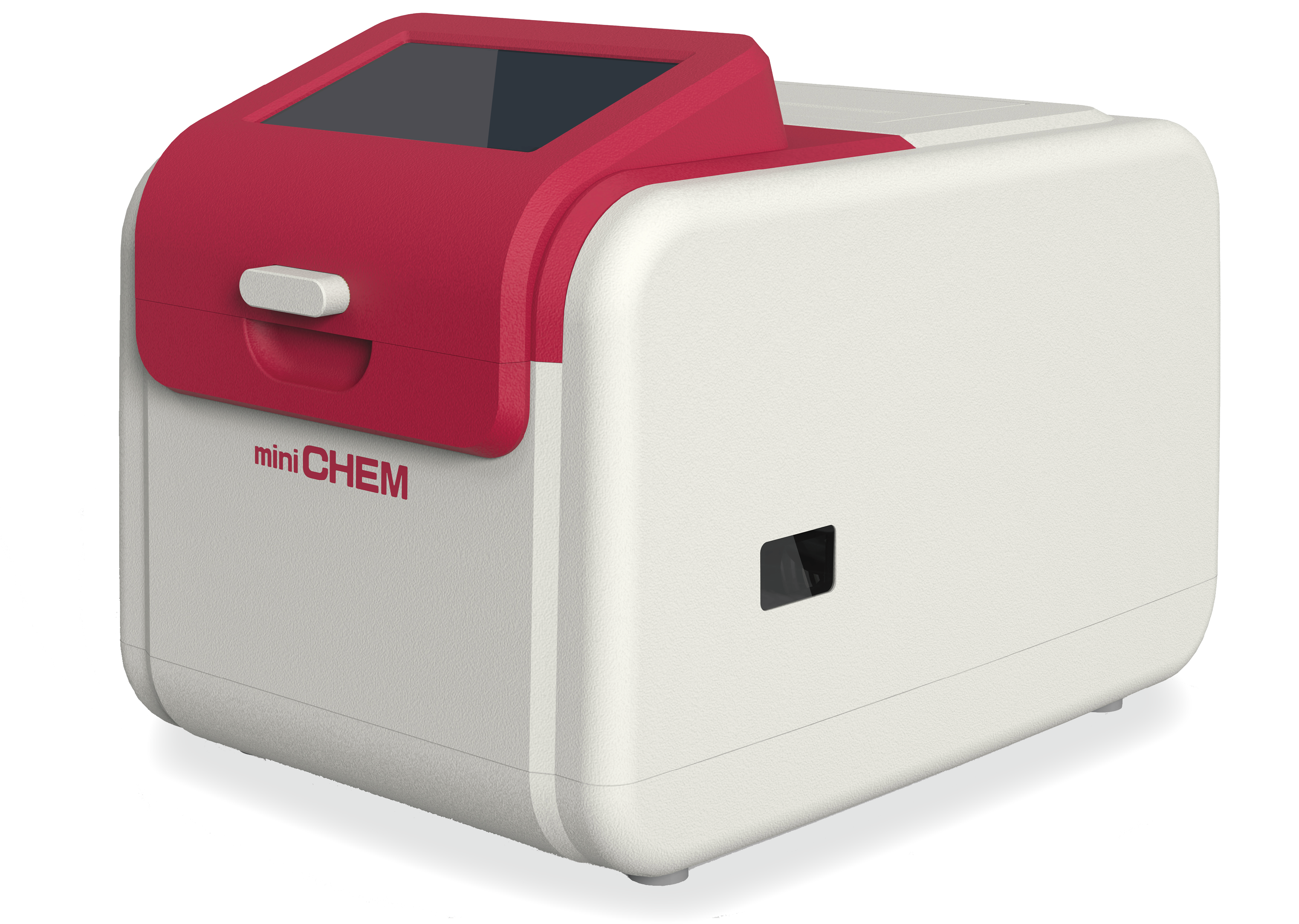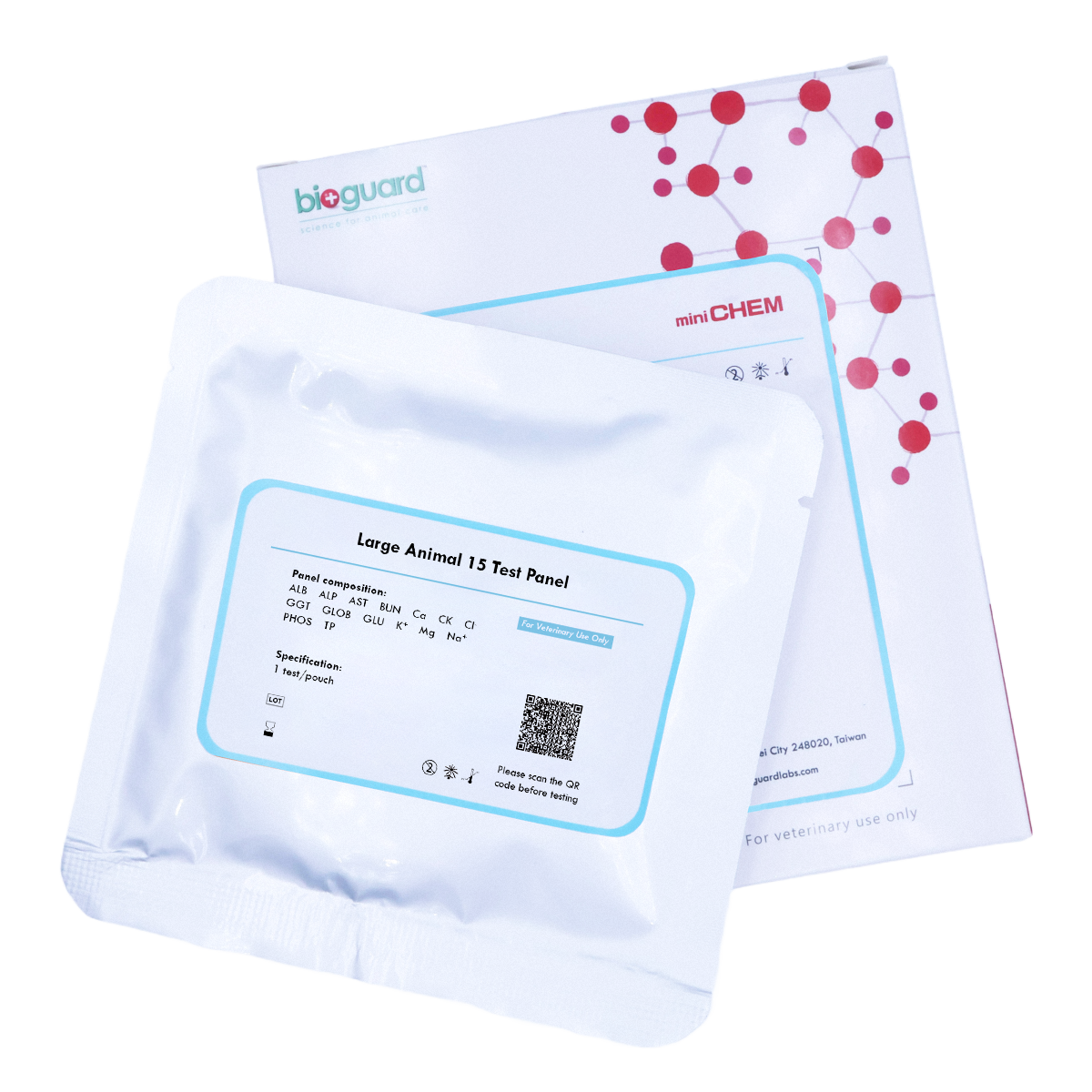miniCHEM
Veterinary Coagulation and Chemistry Combo Analyzer
- Quantitatively detects coagulation functions in various animals
- Simultaneous detection of multiple biochemical biomarkers
- Rapid turnaround, short processing time
- User-Centric Design
- Space-Efficient Design
- Versatile Two-in-One Functionality
Rapid turnaround,
short processing time
User-friendly
Compact size
Versatile Two-in-one Functionality



Minimize Interference Caused by Blood Quality
Various Biochemical Biomarker
Intuitive Automation
Minimal blood sample requirement
Rapid turnaround,
short processing time
User-friendly
Compact size
Versatile Two-in-one Functionality
Minimize Interference Caused by Blood Quality
Various Biochemical Biomarker
Intuitive Automation
Minimal blood sample requirement
- Specification
- Workflow
- Q & A
- Document download
- System download

① Click to start

② Scan QR code

③ Add sample

④ Perform Test
⑤ Get results in 12 minutes

⑥ Print/Save report
For Biochemical Testing:
Serum without anticoagulants (red-top tube, gold-top tube)
Heparinized whole blood or plasma using a green-top (lithium heparin) tube
For Coagulation Function Testing:
Whole blood or plasma collected with a blue-top (sodium citrate) tube
The specimen volume requirements are as follows:
Coagulation function testing: 180μL
Blood chemistry Testing: 140μL (microquantity test disc requires 50μL)
When using serum or plasma as the specimen, it is recommended to draw 2-3 times the required volume of whole blood to ensure adequate specimen volume.
The sample should be tested within 60 minutes of collection. If testing is not possible, plasma should be separated and stored at 2-8℃, not exceeding 6 hours of storage time.
When diluting a sample, it is recommended to use pure water, injection water, or deionized water. It is important to follow the instructions for the specific volume required for each test. Avoid using solutions such as saline, mineral water, or tap water for dilution, as these can cause inaccurate results.
Dogs, cats, rabbits, mice, pigs, monkeys, lizards, horses, cows, sheep, turtles, etc. Other species can be added, but reference ranges need to be established manually.
The testing of each sample takes around 12 to 15 minutes.
Common interfering factors include hemolysis, lipemia, and jaundice, with their degree of interference affecting test results.
At times, the measured values during testing may fall outside the detection limit that the analyzer can detect. This can happen when values are greater than (“>”) the detection limit or when there are interfering substances present in the sample, leading to invalid or non-linear results. In such cases, if necessary, the sample must be diluted and retested. To dilute plasma and serum samples, saline (0.9%) should be used, whereas whole blood should not be used for dilution. Please refer to the manual for specific instructions regarding dilution.
Using the correct anticoagulant in blood collection tubes is crucial for accurate test results.
It’s important to use the correct anticoagulant when collecting blood samples for testing. Blood chemistry tests require the use of lithium heparin (green-top tube), while PCR tests require EDTA (purple-top tube). Using the wrong anticoagulant can affect the results, so be sure to use the appropriate collection tube for the test you are conducting. Both EDTA and lithium heparin can be used for rapid tests. When collecting multiple samples, it’s recommended to follow this order: red-top tube → green-top tube → purple-top tube. This will help ensure accurate results and prevent any adverse effects on the samples.
To perform coagulation function tests, either sodium citrate anticoagulated plasma or whole blood can be used. It’s important to ensure that the tube contains the correct blood volume as indicated, which yields a specified ratio of blood to anticoagulant. Any deviation from the specified blood volume, either insufficient or excessive, can impact the accuracy of the results.
Test Disc
The test disc should be stored between 2-8°C. Its shelf life is 12 months from the date of manufacture. Before use, take the kit out and let it reach room temperature for 10 minutes.
Please note that the test disc is individually sealed, and once opened, it must be used within 30 minutes.
After removing the testing disc from the aluminum foil pouch, place it on a flat surface. Use a micropipette or other sampling device to add the sample through the “Sample” port (marked with a red circle) on the disc. Add the diluent through the “Diluent” port (marked with a white circle) on the test disc. Please refer to the reagent manual for specific instructions on the sample volume.

Please wear lint-free gloves during the operation, as dust can cause destructive effects on the optical components of the instrument. Ensure the test kit remains level during and after sample addition, and be careful not to introduce air bubbles during addition. When placing the test kit, hold it by the edges and avoid touching other parts of the disc.
What precautions should be taken while performing the test?
- Wear lint-free gloves to avoid any dust from getting onto the optical components of the instrument.
- Hold the edges and avoid touching other parts of the disc.
- Always place the disc in a horizontal position and carefully add the sample, avoiding introducing air bubbles.
No, each test disc can only be used once.
No, the test disc cannot be frozen and should be stored at 2-8°C.
The General Chemistry Test Panel (CH03-CH14) requires 140μL of sample and can test a greater number of biomarkers. On the other hand, the microquantity test panels (CH15-CH17) require only 50μL of blood, which makes them ideal for small mammals, birds, and other small animals. However, they can test fewer biomarkers than the General Chemistry Test Panels.
Analyzer
The equipment should be placed on a flat and sufficiently strong surface. The environment should be as dust-free, non-corrosive, and non-flammable as possible. There should be no mechanical vibrations, excessive noise, or power interference. Avoid placing the equipment near heat sources or airflow, ensure good ventilation, and prevent direct sunlight exposure. The working temperature should be between 10-30°C, with relative humidity not exceeding 85%. The ambient temperature should not be below 10°C.
At the end of each workday, it is important to turn off the power and clean any residue from the tray using a damp alcohol cotton ball. It’s also crucial to promptly dispose of any waste materials generated during tests, including test discs and tips. Please wear lint-free gloves while performing daily maintenance.
Yes, the equipment can be connected to an external computer via WiFi, allowing direct data transmission of test results for viewing and printing purposes. The data can also be transmitted to a computer via USB. A supporting software is provided by Bioguard for these functions.
Acceptable sample types include serum, plasma, and whole blood. Choosing the wrong sample type will not affect the results.
The analyzer offers choices for measuring units in both US and SI systems.
Test Disc
Test Disc
Blood Chemistry Test Profiles
*Calculated values
Instructional video
miniCHEM Bioguard’s Veterinary Coagulation and Chemistry Combo Analyzer is easy to use and provides results in just 12 minutes.
It can automatically centrifuge and test whole blood, serum, and plasma.




















